Five winners of the second annual AUVSI XCELLENCE Humanitarian Award were recognized on May 2, 2018 as pioneers in using drones to strengthen communities worldwide.
DJI sponsored the ceremony and helped announce the winners for their work in disaster relief and public safety, education and training, firefighting, wildlife conservation, and ecosystem solutions. Here is a glimpse of the fantastic work these winners are now reputable for.
Utilizing UAVs to Locate Lost Individuals
Search and Rescue Under the Canopy (SARUC)
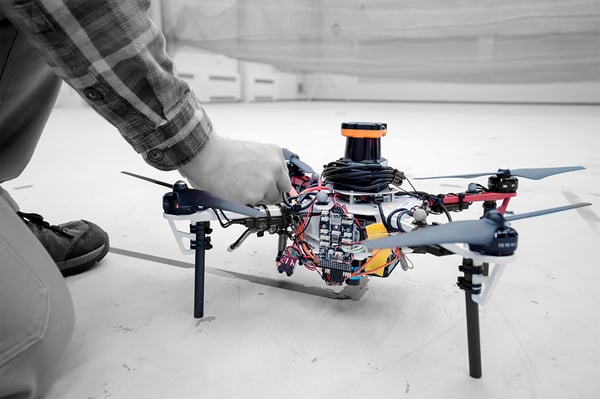

Search and Rescue Under the Canopy (SARUC), is a component of the Search and Rescue (SAR) system which operates under the NASA TACP/CAS subproject. SARUC is a joint collaboration between NASA and the Massachusetts Institute of Technology (MIT).
SARUC is a functional system of intelligent agents collaborating to locate humans and other important targets lost in challenging and vast forest areas. SARUC powers autonomous vehicles with cutting-edge algorithms for laser-based mapping and planning, and vision-based estimation and perception.
An estimated 2,000 people are lost in wooded areas each year, with hundreds suffering fatal outcomes. SARUC technologies are cutting-edge and easily transferable to any challenging environment, such as urban areas in the aftermath of floods, earthquakes, or rolling blackouts.
By using inexpensive and lightweight 2D laser rangefinders, SARUC strives to provide accurate scans of vast, challenging, or dangerous terrain.
An Open Tender Leads to Saved Lives
Swoop Aero – Vaccine and health supply delivery in Vanuatu
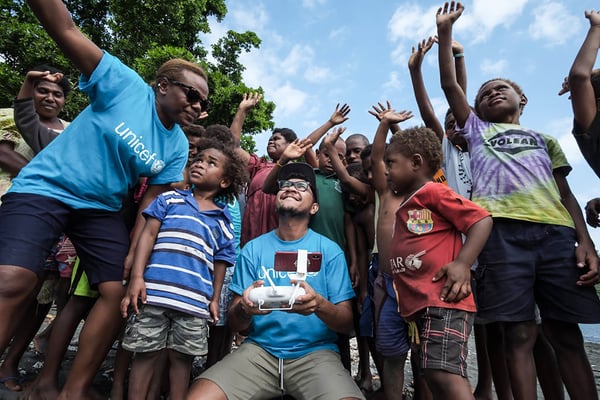
Vanuatu’s most remote islands and villages can only be reached by boat or by traversing through muddy paths. To vaccinate children and treat communities, teams sent by the Ministry of Health carry equipment and medicine by hand, including Cold Chain vaccines (kept between 4-8° C). Such health provisions are expensive and often disrupted, significantly affecting the vulnerable, especially newborn children.
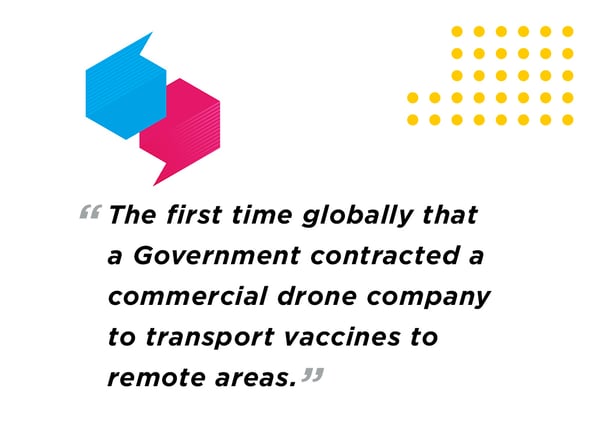
To overcome this, the Ministry of Health, along with UNICEF and the Australian InnovationXChange support, tendered for “transportation of vaccines using Unmanned Aircraft Systems.”
Swoop Aero won the bid, and on Dec 18, 2018, one-month-old Joy became the first person to receive a vaccine delivered by a commercial drone. To reach its destination, the drone flew autonomously over 40 mountainous kilometers and landed precisely in front of nurses waiting near a remote clinic, returning with critical health records not long after.
UAS Program Helps to Rescue Hundreds During Hurricane Florence
NCDOT Hurricane Florence Response
Utilizing advanced drone technology and leveraging established statewide partnerships, the North Carolina Department of Transportation’s (NCDOT) Unmanned Aircraft Systems Program Office mobilized teams to support emergency response to Category 4 Hurricane Florence in September 2018.
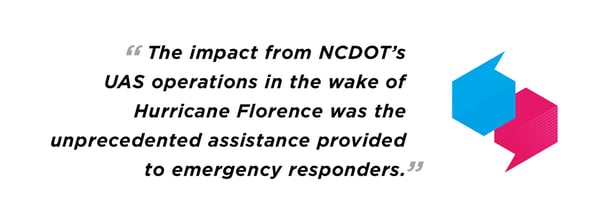
Within a day of Hurricane Florence hitting North Carolina, NCDOT deployed UAS drones to collect data, photos, and videos and to assess critical post-hurricane transportation infrastructure issues, including the closure of coastal access routes, downed power lines, and debris. This information was shared with federal, state, and local emergency responders through a custom-designed online dashboard and with the public via social media, enhancing the safety of residents and helping to guide post-hurricane response efforts.
NCDOT utilized the DJI Phantom 4, Matrice 200, and senseFly eBee fixed-wing drones, and also partnered with the NC Public Safety Drone Academy, under Montgomery Community College, to establish their mobile UAS command center.
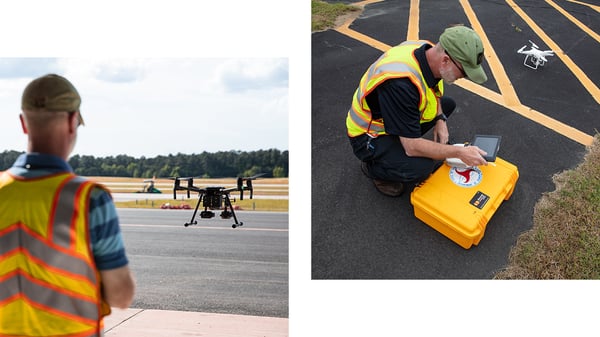
As the week unfolded, NCDOT conducted more than 260 UAS missions and captured more than 8,000 videos and photos of roads, bridges, and dams, which helped government agencies assess conditions quickly, deploy emergency responders efficiently, and divert public movement away from endangered areas.
The impact of NCDOT’s UAS program in the wake of Hurricane Florence was the unprecedented assistance provided to emergency responders and helped to strengthen NCDOT’s reputation of ensuring public safety and improving the efficiency of emergency operations.
Medical Drone Deliveries Saving Lives in Remote Areas
Zipline International
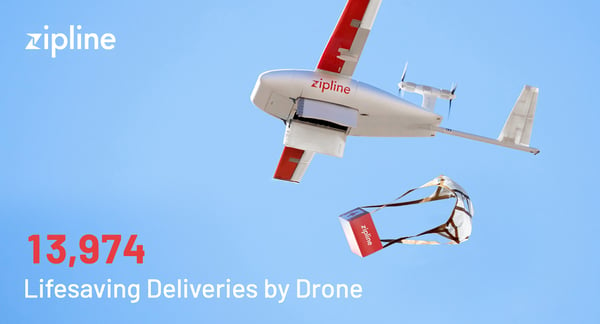
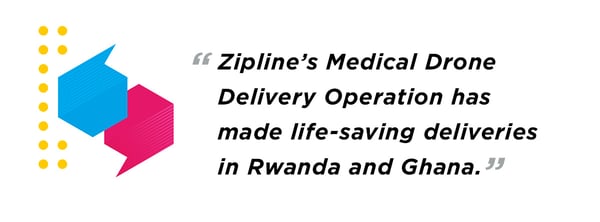
To date, Zipline has:
- Flown over 1 million kilometers, delivering 65% of the country’s blood supply outside of Kigali;
- Completed close to 11,000 on-demand medical deliveries, about a third of which have been during emergencies;
- Helped reduce medical waste by 98%, increased patient access to rare blood products by 175%, and helped to eliminate maternal deaths due to postpartum hemorrhaging in several of the hospitals they serve.
Preventing Life-Threatening Behavior from Vulnerable Individuals
Project Lifesaver International
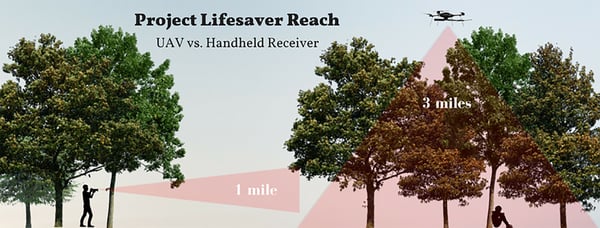
According to the National Autism Association, 1 in 59 children has autism. 49% of autistic children will wander, and another 40% are non-verbal. This presents a unique set of challenges to search and rescue personnel, as many non-verbal autistic children are unable to respond to their name when called.
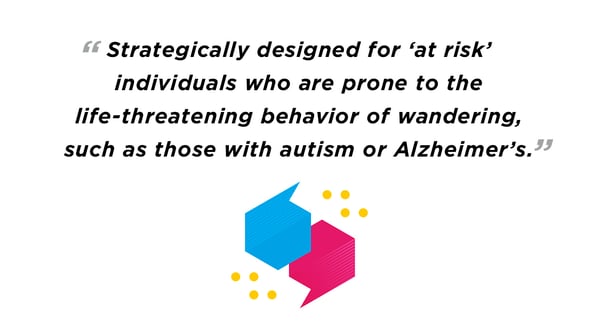
According to the Alzheimer’s Association, 5 million U.S. adults have Alzheimer’s or another form of dementia, and 6 in 10 Alzheimer’s and dementia patients will wander. 50% of those individuals, if not found within 24 hours, will suffer significant injury or even death.
Those suffering from these conditions are among the most difficult for search and rescue teams to locate once they have gone missing.
In a strong effort to overcome this issue, Project Lifesaver continues to integrate innovative methods to advance their program and more importantly, better safeguard those who are most vulnerable.
Through the use of state-of-the-art radio frequency technology, innovative search and rescue techniques, and accredited first response training, Project Lifesaver member agencies have, to date, successfully located over 3,500 special needs individuals. The average recovery times for these rescues are less than 30 mins, which is 95% less time than standard operations.

The Value of Drone Technology
Each of these stories have proven that through a collective and genuine effort, the world’s most significant issues can be resolved both efficiently and inexpensively. Drone technology has continuously impacted the way various companies choose to serve the public. From transportation of medical supplies to assisting in search and rescue missions, established UAS programs have displayed the value of drones during emergencies.
For more information about #DronesForGood Initiative, visit Drones Help
Read more stories about how drone technology are making great contributions to their communities and the environment in our #DronesHelp series. Follow us on social media and check out the hashtag #DronesForGood.
